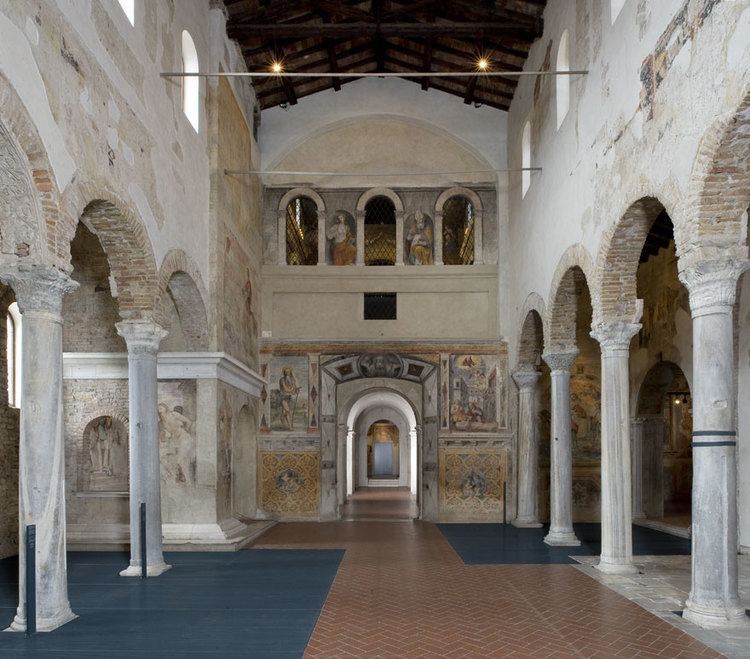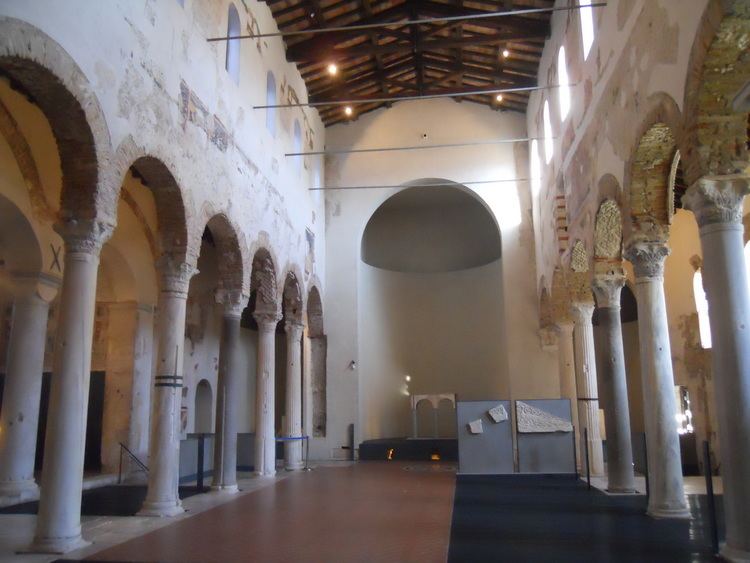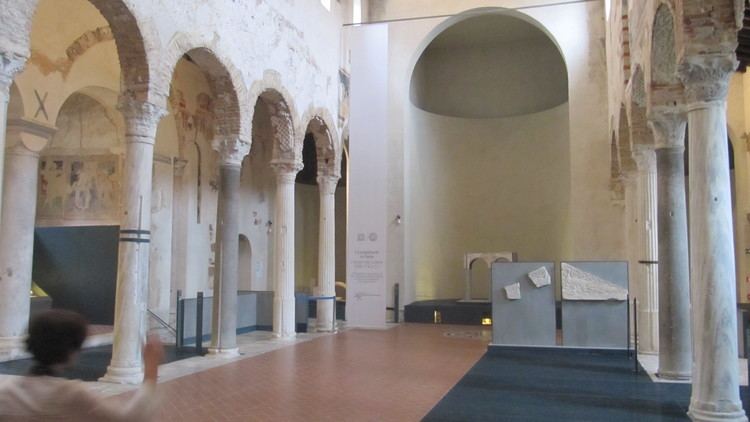Criteria ii, iii, vi | Type Cultural Reference 1318 UNESCO World Heritage Site inscription 2011 | |
 | ||
UNESCO region Europe and North America Similar Saint Maria in Solario, Museo di Santa Giulia, Capitolium of Brixia, Church of Santa Giulia, Old Cathedral - Brescia | ||
San Salvatore (or Santa Giulia) is a former monastery in Brescia, Lombardy, northern Italy, now turned into a museum. The monastic complex is famous for the diversity of its architecture which include Roman remains and significant pre-Romanesque, Romanesque and Renaissance buildings.
Contents

In 2011, it became a UNESCO World Heritage Site as part of a group of seven inscribed as Longobards in Italy, Places of Power (568-774 A.D.).

The monastery is traditionally considered the place where Desiderata, wife of Charlemagne and daughter of the Lombard King Desiderius, spent her exile after the annulment of her marriage in 771.

History

San Salvatore was founded in 753 by Desiderius, future king of the Lombards, and his wife Ansa, as a female monastery, his daughter Anselperga becoming the first abbess. After the Lombard defeat by Charlemagne, San Salvatore maintained its privileges as a royal institution, and enlarged its possessions.

Alfred the Great visited this monastery when he went to Rome in the 850s. He later founded his own monastery for nuns at Shaftesbury Abbey in Dorset, putting his own daughter in charge; although there is no clear evidence, it is possible he took this monastery as his inspiration.

In the 12th century most of the edifices were rebuilt or restored in the Romanesque style, and the oratory of Santa Maria in Solario was erected. In the 15th century all the structures were again restored and a dormitory was added. In 1599 the church of Santa Giulia was finished.
The monastery was suppressed in 1798 after the French invasion of Lombardy, and turned into barracks. It remained in poor condition until 1882, when it became a Museum of the Christian Age; the decay was however not totally halted before 1966, with a general restoration and the creation of a new Museum of Santa Giulia.
Overview
The monastery complex includes:
Also visible in the complex are some Roman houses (domus), excavated beneath the former nuns' orchard.
